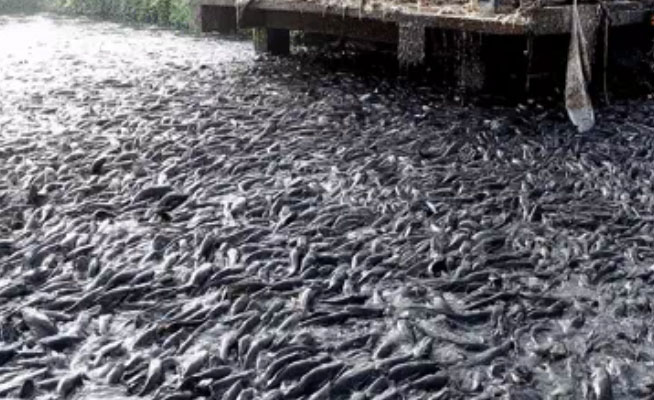Millions of catfish (Scientific name: Clariidae) have gathered near the shore as the sound of an engine roars. The reason is that they are competing to get close to this engine for food from the farmers.
According to the video uploader (which has attracted over 9 million views on YouTube), catfish are an easy species to raise and provide high economic value. However, to achieve maximum efficiency, farmers should pay attention to the following points:
1. A flat land base for the fish pond should be chosen, ensuring that vehicles can easily access it. The pond’s bottom should be compacted, with a depth of about 1.5 to 2.1 meters and a slight slope. The ideal area to start raising catfish is between 0.4 to 2.4 hectares.
2. If you already have a pond before starting, you can use it for fish farming. If not, you’ll need to use an excavator to create the pond and install a water supply system (covering the pipes with mud for better protection). Additionally, an oxygen aeration system and an air pump should be installed.
3. Plant grass around the pond to prevent erosion.
4. When stocking fish in the pond, the number of fish released will depend on their size, the aeration system you have installed, your experience in aquaculture, the market demand you can supply, and the risks you are willing to accept.
The optimal number of fish for beginners is no more than 6,000 fish per 0.4 hectares.

A school of catfish rushing towards the engine.
5. Prepare vaccines to ensure the health of the fish. If possible, have an independent laboratory to conduct preliminary tests with a small quantity.
6. When feeding, keep in mind that each small fish will consume a quantity of food equal to 1/3 of its body weight. When the temperature is warmer than 18 degrees Celsius, the fish will have a higher feeding demand, so they should be fed daily.
The ideal temperature for catfish is 30 degrees Celsius, but they can still survive when the temperature drops to 7 degrees Celsius.
7. Harvest catfish when they reach a weight of 0.9 to 2.7 kg (depending on the size desired by the buyers), using a drag net to catch them.


















































